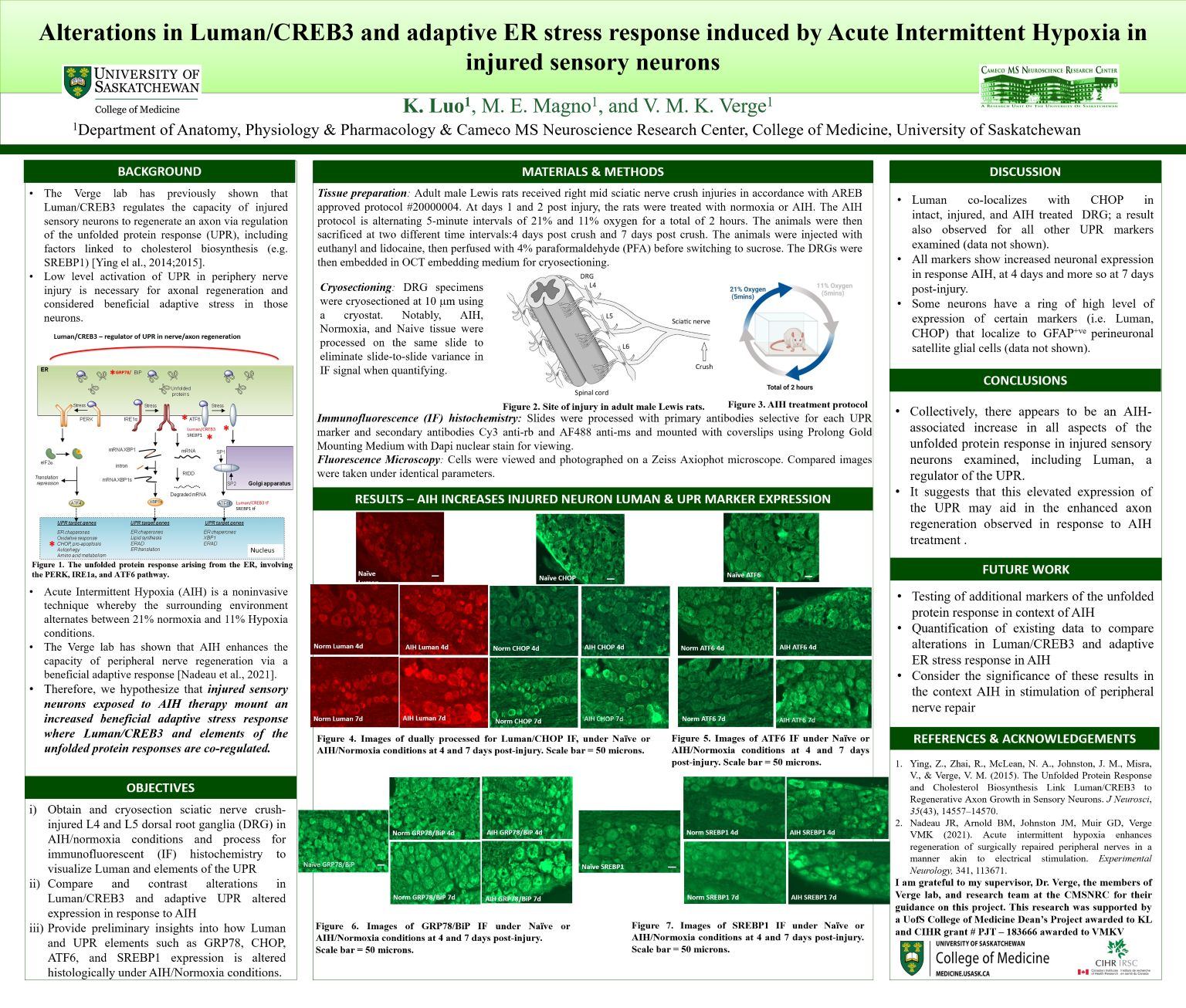
Alterations in Luman/CREB3 and adaptive ER stress response expression induced by Acute Intermittent Hypoxia in injured sensory neurons
Kyle Luo
Luman/CREB3 has previously been shown to regulate the capacity of injured sensory neurons to regenerate an axon via the unfolded protein response (UPR). A low level activation of UPR is considered beneficial adaptive stress in peripheral neurons undergoing axonal regeneration. Additionally, we have also shown that Acute Intermittent Hypoxia (AIH) enhances peripheral nerve regeneration via a presumably beneficial adaptive stress response. Thus, we hypothesize that “injured sensory neurons exposed to AIH therapy mount an increased beneficial adaptive stress response where Luman/CREB3 and elements of the UPR are co-regulated”. The purpose of this study is to provide preliminary insight into how Luman and UPR elements, such as GRP78, CHOP, ATF6, and SREBP1 expression are altered in sensory neurons under AIH and normoxia conditions in response to unilateral 4d or 7d sciatic nerve crush injury. During the study, AIH and normoxia treated rat dorsal root ganglia at the L4 and L5 levels were cryosectioned and processed using immunofluorescence histochemistry, photographed and qualitatively analyzed. Preliminary findings reveal that AIH induces an increase in Luman and UPR marker expression in injured sensory neurons, suggesting that the elevated expression of UPR may indeed aid in the enhanced axonal regeneration observed with AIH treatment.
